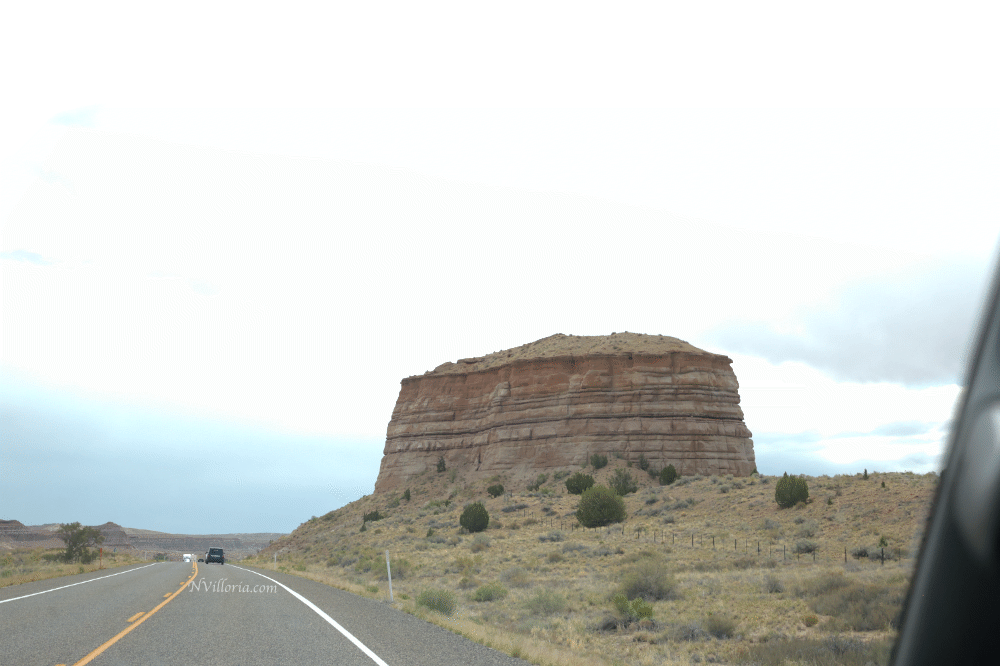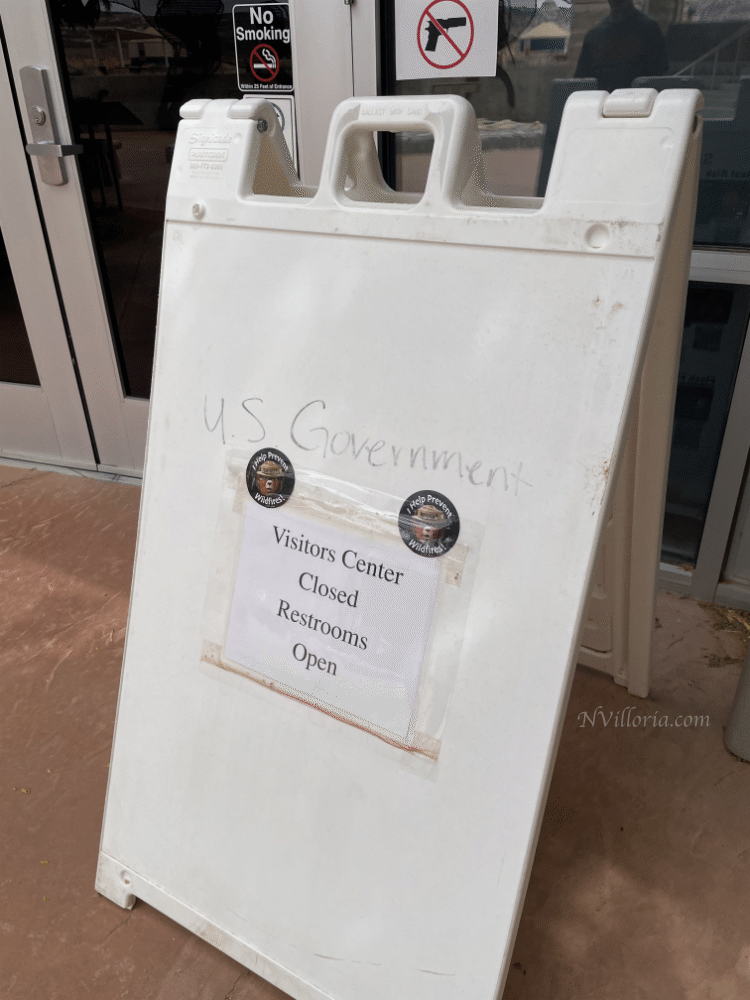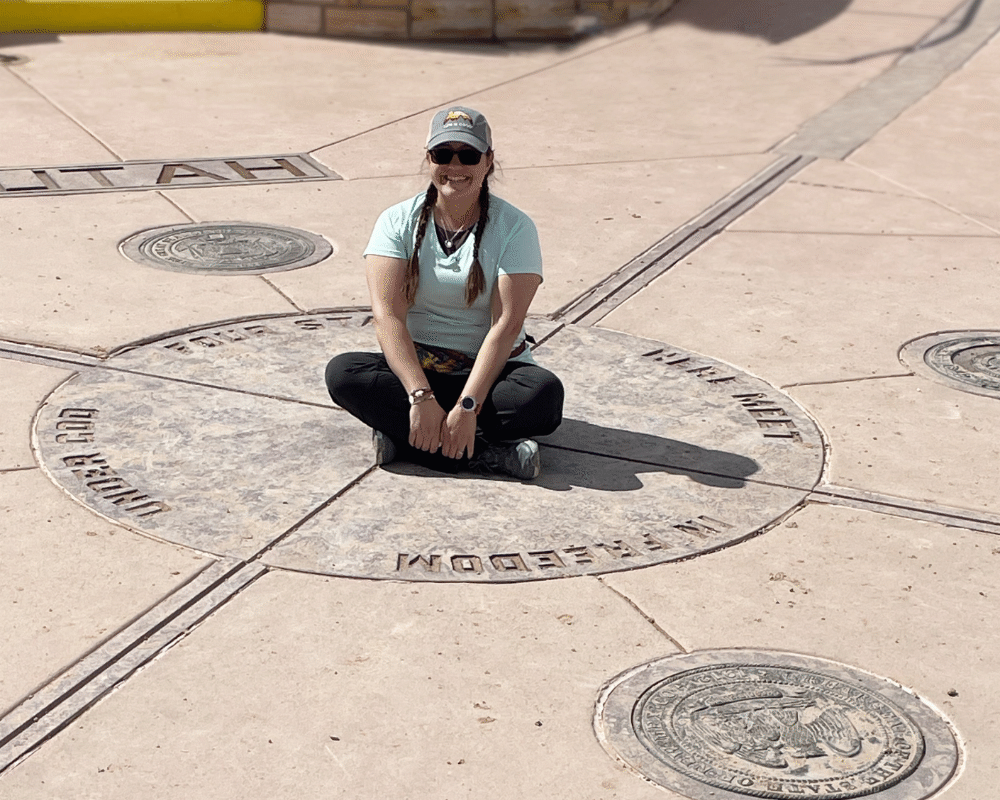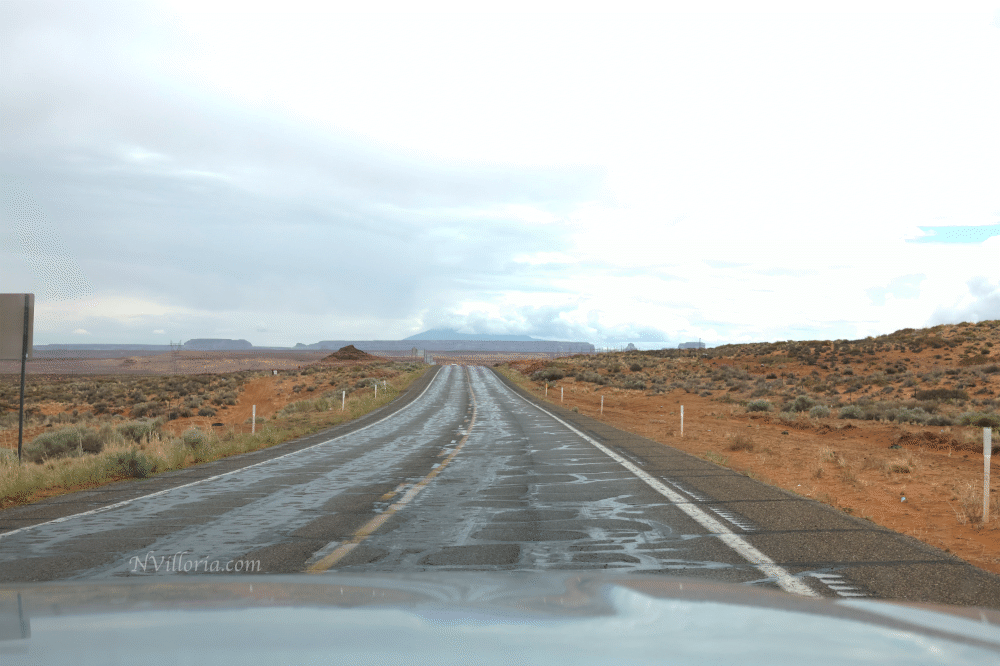Visiting the Four Corners Monument | Learning & Living Premiere
- Nikki Emord
- Jul 4
- 4 min read
National Parks and monuments have a special place in my heart. Not only because of the thrill of exploring otherworldly geographical formations, or encountering new wildlife and ecosystems, but having the opportunity to dive into the history of what makes the location so iconic. No matter how many times we visit these public lands and historical locations, I always enjoy putting together the recaps and sharing what I learned along the way.
In 2021 I set a new bucket list item in motion to visit every National Park. This spring, we spent five days visiting the Four Corners region and hit a milestone: 10 national parks! The Four Corners is a unique area of the Southwestern United States, that encompasses the southwestern corner of Colorado, the southeastern corner of Utah, the northeastern corner of Arizona, and the northwestern corner of New Mexico. Much of this region belongs to semi-autonomous Native American nations, primarily the Navajo Nation, along with Hopi, Ute, and Zuni tribal reserves and nations. As part of the larger Colorado Plateau, the Four Corner area resides in amongst an arid and rural landscape. As a first-time visitor to New Mexico or Colorado beyond the airport, I was incredibly excited to see what we could discover in this short period of time.
With so much history, sights and experiences to share, rather than share my usual recap of the full trip I thought I’d try something a little different and put our five day journey into a series that allows me to properly do each location justice and share the experiences along the way. I’m super excited to present this to you and hope you enjoy the start of this new debut series, “Learning and Living.”
Although this trip would begin with a number of firsts, we spent the first few hours skipping between Arizona and Utah and made a brief stop at Pipe Springs National Monument located adjacent to the Kaibab Band of Paiute Indians Reservation in northern Arizona. This is a location we have been to before but one that I feel is always worth revisiting for a pit stop, if for nothing else than to visit with the two long-horns, chickens and large wild lizards.
Leaving Pipe Springs the remainder of our route led us up into the Southern part of Utah and back into Northern Arizona. Enticed by a sign promising a dinosaur exhibit, we made a pit stop at the Big Water Visitor Center in Grand Staircase-Escalante National Monument to explore. Unfortunately this stop was our first display of current park cutbacks and the center was closed, only a few weather-worn outdoor signs offered information on the area's early geology and paleontology so it wasn’t long before we were back on the road. We soon passed over the Glenn Canyon Damn on Lake Powell and through Page, Arizona before continuing through the vast openness of the Arizona desert before reaching a tiny segment of New Mexico.

Having never been to this region, it only seemed natural to begin our journey with the first official stop being the Four Corners Monument. From Las Vegas the drive to the Four Corners took us through Southern Utah, Northern Arizona, and a minuscule portion of New Mexico. It was a drive filled with quintessential Southwest desert landscapes where the roads stretched out, dry brush carpeting sections of the dessert, and dramatic geological formations providing the only breaks of the flat horizons around us.
Nine and a half hours after leaving Las Vegas, we arrived at the monument. Pulling into the dirt lot of the Four Corners Monument Navajo Tribal Park in Navajo Nation, and home to the Ute Mountain Ute Tribe, the simplicity of the entrance included a small cashless payment stand, where we paid an entrance fee of $8 per person to enter.

At the center of it all was the iconic Four Corners medallion, which was replaced in 1992, and is the only unique geographical marker in the United States where four states meet at a single point. And with the opportunity present, we couldn’t help but enjoy a moment standing simultaneously in Arizona, New Mexico, Utah, and Colorado — taking a photo that perfectly encapsulated the spirit of our current adventure.
The monument itself includes the flags of the four states and surrounding tribal nations. The center medallion is bordered by a square array of Native American vendor booths offering a variety of souvenirs, intricate jewelry, and artwork from the Navajo and Ute tribes. The monument is managed by the Navajo Nation Parks and Recreation Department, and the surrounding area is rich with the cultural heritage of the Navajo people and other Pueblo tribes.
Beyond the novelty of the location, the precise point of the Four Corners Monument, located on the Colorado Plateau, was first surveyed in 1868, as part of the initial demarcation of the boundaries of the territories that would eventually become these four states. The first official marker at the Four Corners, a simple cement pad, was placed in 1912. As the monument grew, a brass disc marker was installed in 1931, but it eventually became overly worn from numerous visitors standing on it and was subsequently replaced with the current marker.
Beyond the main square, a handful of concession carts offered food and drink options. Like the monument itself, these amenities were simple and functional, serving the needs of visitors without detracting from the focus on the landmark. Looking around, and having done some early research, I couldn’t pass up the opportunity to try the acclaimed Navajo frybread taco from Grandma Frybread Shack — which I am happy to report was a delicious frybread.
All in all, it was a nice starting point for our adventure and set the stage for the incredible stories and sights we would uncover over the next few days in the surrounding region.













Comments